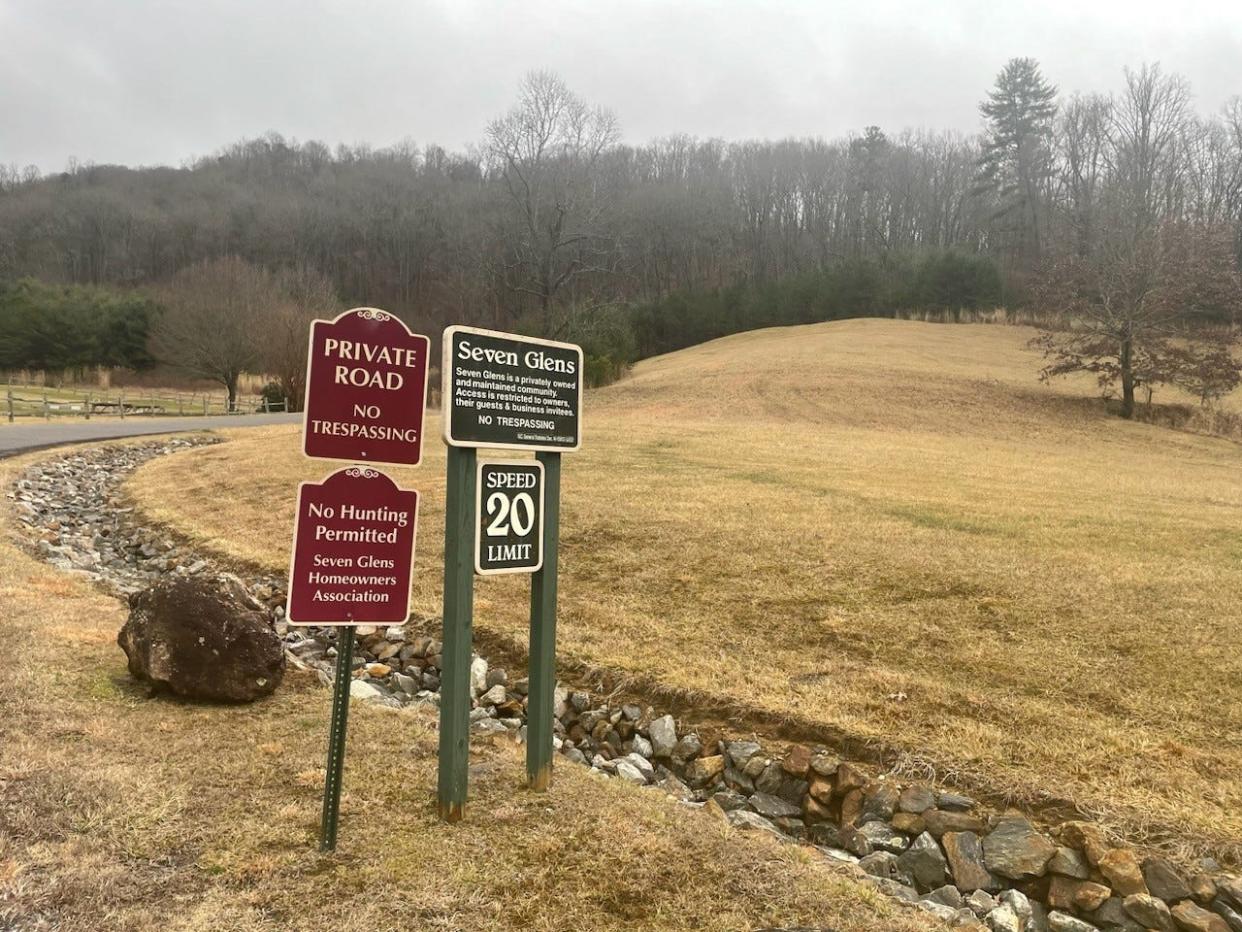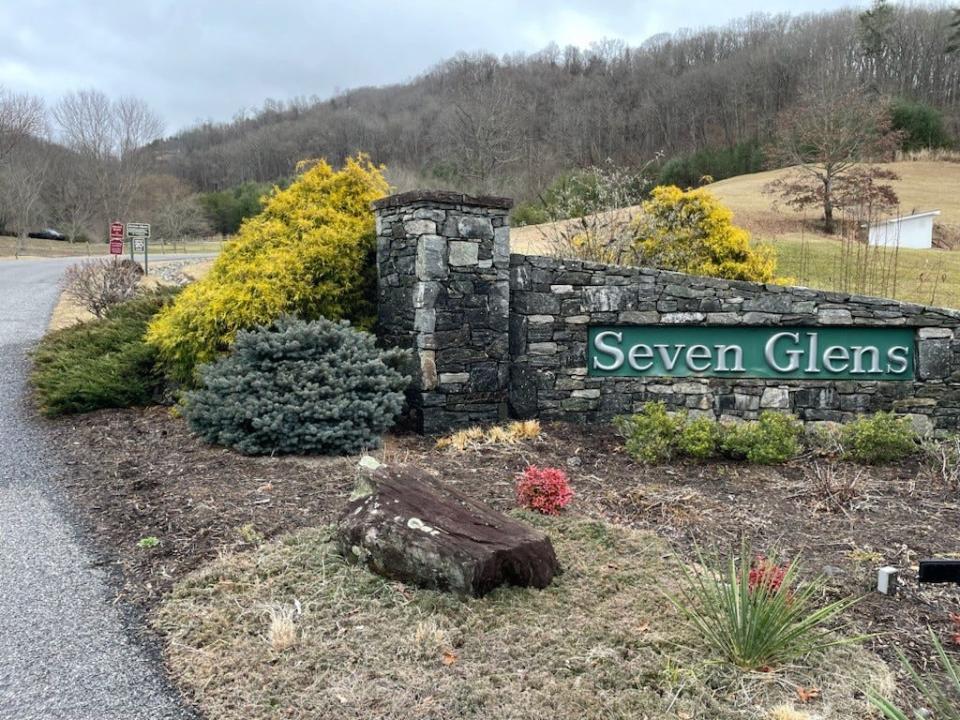'We need to deal with the situation': Madison County forms ridge top protection work group

MARSHALL - Madison County has had its fair share of highly-contested projects throughout the last few years — from an asphalt plant to a "glamping" site in Alexander, to the county's ongoing regulation of biomass facilities.
But the county's 50-foot setback requirement for building on ridge tops may be the hottest topic in the county throughout the last few years, and the issue is back on the radar, as the county commissioners voted Feb. 13 to form a ridge top focus group.
The commissioners' vote comes after the Planning Board voted to recommend the commissioners scrap the 50-foot setback requirement for building on ridge tops in its December meeting in response to an application from Russell Blevins.
The motion for a focus group was offered by Board of Commissioners Chair Matt Wechtel.

"I would like to recommend the formation of a ridge top protection work group, so that we can put together an idea as to how we are going to consider any changes, if there will be any changes — the group could come back and say they don't recommend any changes," Wechtel said. "But regardless, we have a Planning Board that has recommended that the ridge top protection rule be changed. I think, in an attempt to take all things into consideration, the best way to attack that would be with a work group."
The work group's formation will be performed by County Manager Rod Honeycutt.
Vice Chair Michael Garrison recommended in Wechtel's motion that the county grant Honeycutt authority "to request input from people outside county government," and that the group be comprised of at least two county commissioners.
"We'll develop a framework and notify the public, notify the commissioners, and make sure we get appropriate participation in the group," the county manager said.

The North Carolina Mountain Ridge Protection Act of 1983 established protections in the form of building height restrictions for ridgelines at or above 3,000 feet and came into legislation in response to an Avery County condominium complex, Sugar Mountain.
In 2010, Madison County established the Mountain Ridge Protection Ordinance, which "regulates the height of tall buildings or structures on mountain ridges, providing for the method of administration and enforcement, defining certain terms used herein, and providing for the imposition of penalties for violation of provisions of the ordinance."
Madison is currently the only county in the state that protects against building on ridge tops.
Blevins told The News-Record & Sentinel in November that he and Parker applied to have the Mountain Ridge Protection Ordinance's 50-foot ridge top setback requirement removed because he wanted to build a cabin for his family, adding that he felt his children would want to potentially build cabins as well.
Madison County Planning Board member Clay Honeycutt of Ebbs Chapel appeared before the commissioners during the board's Feb. 13 meeting to offer his thoughts on the issue.
"The 50-foot setback only hurts families who own this land, that want to build on it," Clay Honeycutt said. "It doesn't hurt a developer. The developer sells a view. The cost of a foundation makes no difference to the developer."
Honeycutt also presented an outline of ideas for the board ahead of its looming decision on the Planning Board's recommendation.
"I've spoken with a lot of people on both sides of this issue, and I think the comment that getting rid of this ridge top ordinance would be dead on arrival if you were a board member, is so shortsighted," Honeycutt said. "That doesn't stop any development from occurring in the county. We're going to set ourselves up for a place where somebody comes in and they say, 'I'm going to put a road right off the center of this ridge,' — which is allowed, under our ordinance as it stands now — 'and I'm going to feed houses off both sides.' Now we're feeding houses off both sides."
Honeycutt said he felt residents would attribute blame to the Planning Board members for their recommendation to remove the 50-foot setback requirement, and advocated for the county to work together to reframe its regulation against building on mountain ridges altogether.
"Then, we'd have all kinds of comments of, 'Look what the Planning Board has done. They approved this,'" Honeycutt said. "We don't pick. We don't get to choose. Did they meet their requirements, or did they not meet their requirements. So, if our requirements are insufficient, that's a problem we have to deal with now, not after. We can be proactive, or we can be reactive. But if we react, we're still going to have that one scenario that set off the entire reaction that will be allowed. Where will that be, who knows. But it will happen."
More: Madison planning board votes to nix 50-foot setback requirement; forms ridge focus group
In the Planning Board's Dec. 19 meeting, Clay Honeycutt introduced the idea for the county commissioners and Madison County Planning Board to form a ridge top focus group, similar to the county's courthouse funding, biomass and noise ordinance focus groups.
"I don't like the premise that we don't want to protect these ridges," Honeycutt said. "We've been entrusted to protect them since the Civil War. We will continue to do so."
Clay Honeycutt told the commissioners Feb. 13 that the county "has lost sight" with regards to the ridge top issue, adding that a lot of residents "have tried to make political hay out of this."
"Those folks are going to whack you with that political stick either way," Honeycutt said. "This is an issue that we have the chance to fix right now. It wouldn't take very long. It took me longer to type that, I promise you, than it did to come up with those ideas. And this is nothing from the Planning Board, this is just me. I don't want to come from Wolf Laurel down to Mars Hill and see the entire ridgeline with lights and houses. We can stop that right now."
The commission chair agreed with Clay Honeycutt in stressing urgency in his motion to form a focus group.
"We don't want this lingering for eternity here," Wechtel said. "It's something where, one way or the other we need to deal with the situation at hand."
This article originally appeared on Asheville Citizen Times: Madison County forms ridge top protection work group

